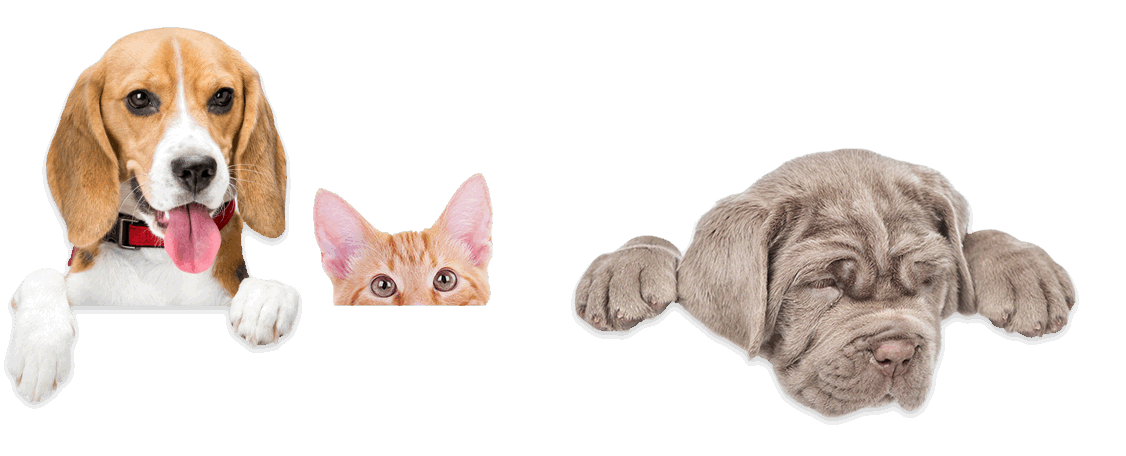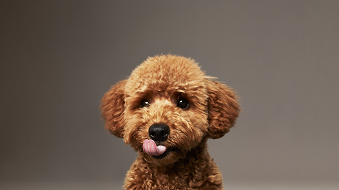


The science of Gastrophysics, which looks at how the taste, smell and enjoyment of food are influenced by the senses has been applied to the canine world for the first time, in a research report commissioned by 100% natural pet food brand, Naturo.
The report written by Oxford University professor and experimental psychologist Charles Spence, looks at how pet owners can enhance their dogs’ mealtimes, by understanding more about the way their animals experience the world of taste.
The top five findings include:
Dogs are colour-blind and are disinterested in the appearance of food
A dog’s sense of smell is up to a million times better than a human, and they prefer meaty odours such as beef and pork
Dogs only have one-sixth the number of taste buds humans have
Dogs can be tricked into eating less through simple optical illusions
Just like humans, dogs also suffer from sensory overload, which can negatively impact taste
Worlds away in taste
From a sensory perspective, dogs are a million miles from humans in the way they experience food. Whilst humans love an Instagrammable meal, the research found the same cannot be said for dogs, who are red-green colour blind[1], which makes food far less visually appealing. However, it has been suggested that dogs may appreciate food when it has a lighter or brighter appearance.[2]
So whilst they may miss out on the artistry behind an aesthetic culinary masterpiece, their sense of smell certainly makes up for it. A dogs’ ability to smell external odours (an orthanasal sense of smell) is said to be up to a million times better than that of humans. Dogs also have the ability to breakdown smells further in a way that humans are simply unable to do.[3]
And this sense of smell is what leads to their taste experience, with them being typically drawn to meaty odours[4], with beef and pork a preference over chicken and lamb; although picky pooches will soon get bored if the food itself isn’t tasty.
Teach an old dog new tricks
Dogs also have only one-sixth the number of taste buds humans have, about 1,700 compared to 9,000[5]. They do not share the same love of bitter and spicy foods that humans do[6]. Interestingly, they also have little sensitivity to salt, because meat, which featured heavily in their ancestral diet, would naturally have been high in sodium.[7]
Dogs can also be quite cunning when it comes to choosing their food portions in order to fulfil their insatiable appetites, always going for the bowl that appears to have the most food in it[8], regardless of taste or visual appearance. However, their excellent sense of smell is still unable to distinguish which bowl contains more food. Given the chance, some species of dogs, notably, Beagles, will overeat by as much as two to five times as they should.[9]
So, if pet owners are keen to keep an eye on their dogs’ weight, or tendency to overeat, it’s useful to know that they can be tricked with a simple optical illusion. Humans are known to perceive there to be more food when it is served on a small, rather than a large plate, or a rimless bowl over a bowl with a rim.[10]. So simply switching up a pet’s food bowl could potentially help manage their weight accordingly.
Gail Cook, Head of Marketing at Naturo, said: “The findings in Professor Spence’s research report are truly fascinating. As a leader in the natural pet food market, we are always striving to do more for our pets, so to be able to look at the way they explore the world of taste in this level of detail is going to help us to continue to enhance their lives, as well as our offering.
“When it comes to a dog’s food palate, we know owners want to ensure mealtimes are enjoyable without compromising on nutrition or taste. These findings show that if dog owners are well-informed about the different factors that affect mealtimes, they can optimise their dogs’ eating satisfaction quickly, which can be enhanced further with Naturo’s natural and high-quality pet food.”
Significance of sound
And on the topic of weight, there has been noted to be a pattern between obesity in dogs and their owners, which hints at the relationship between what owners choose to feed themselves and their pets[11]. It appears that pet owners are in fact much more serious about buying healthy food for their dogs than they are for themselves.[12] Whilst eating and drinking are hugely social activities in humans[13], this is not the same for dogs, who evolved from competitive pack-hunters[14], so they don’t savour food in the same way as humans. Dogs also tend to only eat during daylight hours[15], and go for large and infrequent meals, rather than set times.
The research also suggests that just like their owners, dogs can suffer from sensory overload[16]. In humans, taste is negatively influenced by loud background noise, and it has been reported that in the animal world, background noise results in animals consuming more food, possibly as a way to deal with this sensory overload[17]. In humans, loud sounds can block out sweet and sour tastes[18], and similar sound rules may be applicable to dogs. Very low-pitched sounds tend to accentuate the bitterness in food and drink, which is a taste that dogs have never acquired a liking for – so it may be wise to think twice before playing drum and bass in front of your dog at mealtimes.
Oxford University professor and experimental psychologist Charles Spence said: “Ultimately, our appreciation of food is heavily influenced by what it looks like, by the aroma, and even by the appealing sound of noisy foods and its preparation. By contrast, dogs have little interest in what food looks, or sounds like. While they have vastly superior smell abilities as compared to humans, their tasting abilities are much reduced and quite different from us, thus making it hard for pet owners to know which foods their pets will appreciate the most.
“The fact that humans and their pets live in such different sensory worlds can make it challenging to optimise the food offering for one’s pet, even though so many pet owners prioritize their pet’s nutrition over their own. Nevertheless, there are a number of directions for gastrophysics-type research that will likely help pet owners to make their pets’ mealtimes more enjoyable, and possibly help to nudge their pooches toward a healthier and more sustainable food future.”
Gail Cook, Naturo, concluded “This important piece of research helps build our understanding of the holistic needs of our pets and goes some way to helping address the obesity epidemic.
“At Naturo, we want pets to live long and healthy lives and this unique study serves to help us further understand how to take the best care of them.”
References
[1] Siniscalchi, M., d’Ingeo, S., Fornelli, S., & Quaranta, A. (2017). Are dogs red–green colour blind? Royal Society Open Science, 4:170869. http://dx.doi.org/10.1098/rsos.170869; Spence, C., & Piqueras-Fiszman, B. (2014). The perfect meal: The multisensory science of food and dining. Oxford, UK: Wiley-Blackwell.
[2] Beck, R. (2021). Brighten the appearance of pet food. Pet Food Industry, August. https://www.petfoodindustry.com/.
[3] Gazit, I., Goldblatt, A., Grinstein, D., & Terkel, J. (2021). Dogs can detect the individual odors in a mixture of explosives. Applied Animal Behaviour Science, 235:105212. https://doi.org/10.1016/j.applanim.2020.105212.
[4] Hall, N. J., Péron, F., Cambou, S., Callejon, L., & Wynne, C. (2017). Food and food-odor preferences in dogs: A pilot study. Chemical Senses, 42(4), 361-370. https://doi.org/10.1093/chemse/bjx016.
[5] Coren, S. (2011). How good is your dog's sense of taste? In a taste sensitivity contest with dogs, humans clearly win. Psychology Today, April 19th. https://www.psychologytoday.com/us/blog/canine-corner/201104/how-good-is-your-dogs-sense-taste; Spence, C. (2022). The tongue map and the spatial modulation of taste perception. Current Research in Food Science, 5, 598-610. https://doi.org/10.1016/j.crfs.2022.02.004.
[6] Lei, W., Ravoninjohary, A., Li, X., Margolskee, R. F., Reed, D. R., Beauchamp, G. K., et al. (2015). Functional analyses of bitter taste receptors in domestic cats (Felis catus). PLoS ONE, 10(10):e0139670. https://doi.org/10.1371/journal.pone.0139670.
[7] Coile, C. (2020). Accounting for taste: What do dogs find most delicious? American Kennel Club, November 5th. https://www.akc.org/expert-advice/nutrition/accounting-taste-probing-mysteries-dogs-find-delicious/; Kitchell R. L. (1978). Taste perception and discrimination by the dog. Advances in Veterinary Science and Comparative Medicine, 22, 287-314.
[8] Byosiere, S. E., Feng, L. C., Woodhead, J. K., et al. (2017). Visual perception in domestic dogs: Susceptibility to the Ebbinghaus–Titchener and Delboeuf illusions. Animal Cognition, 20, 435-448. https://doi.org/10.1007/s10071-016-1067-1.
[9] See Bradshaw (1991).
[10] Holden, S. S., Zlatevska, N., & Dubelaar, C. (2016). Whether smaller plates and bowls reduce consumption depends on who's serving and who’s looking: A meta-analysis. Journal of the Association for Consumer Research, 1, 134-146; Petit, O., Velasco, C., & Spence, C. (2018). Are large portions always bad? Using the Delboeuf illusion on food packaging to nudge consumer behaviour. Marketing Letters, 29(4), 435-449.
[11] Linder, D. E., Santiago, S., & Halbreich, E. D. (2021). Is there a correlation between dog obesity and human obesity? Preliminary findings of overweight status among dog owners and their dogs. Frontiers in Veterinary Science, 8:10.3389. DOI=10.3389/fvets.2021.654617; See also Kienzle, E., Bergler, R., & Mandernach, A. (1998). Comparison of the feeding behaviour of the man-animal relationship in owners of normal and obese dogs. Journal of Nutrition, 128, 2779S-2782S.
[12] Tesfom, G., & Birch, N. (2010). Do they buy for their dogs the way they buy for themselves? Psychology & Marketing, 27, 898-912. https://doi.org/10.1002/mar.20364; See also Jyrinki, H. (2006). Pets as extended self in the context of pet food consumption. European Advances in Consumer Research, 7, 543-549.
[13] Jones, M. (2008). Feast: Why humans share food. Oxford, UK: Oxford University Press; See also Spence, C., Mancini, M., & Huisman, G. (2019). Digital commensality: On the pros and cons of eating and drinking with technology. Frontiers in Psychology, 10:2252. doi: 10.3389/fpsyg.2019.02252.
[14] Bradshaw (2006).
[15] Mugford, R. A. (1977). External influences on the feeding of carnivores. In M. R. Kare & 0. Maller (Eds.), The chemical senses and nutrition (pp. 25-50) New York, NY: Academic Press.
[16] Sensory overload in dogs, see https://wagwalking.com/condition/sensory-overload; Sensory overload in humans, see Malhotra, N. K. (1984). Information and sensory overload. Information and sensory overload in psychology and marketing. Psychology & Marketing, 1(3‐4), 9-21.
[17] Kupfermann, I. (1964). Eating behaviour induced by sounds. Nature, 201, 324.
[18] Spence, C. (2014). Noise and its impact on the perception of food and drink. Flavour, 3:9. doi:10.1186/2044-7248-3-9; Yan, K. S., & Dando, R. (2015). A crossmodal role for audition in taste perception. Journal of Experimental Psychology: Human Perception & Performance, 41, 590-596.